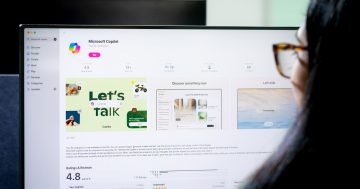Chris Stokel-Walker* says Twitter users will have 30 minutes to alter their tweets—but only if they subscribe to Twitter Blue.
 It’s been rumoured for months, and clamoured for by high-profile users, including reality TV star Kim Kardashian—who needled Twitter founder Jack Dorsey about it at Kanye West’s birthday party in 2018.
It’s been rumoured for months, and clamoured for by high-profile users, including reality TV star Kim Kardashian—who needled Twitter founder Jack Dorsey about it at Kanye West’s birthday party in 2018.
And now the Twitter edit button is finally here.
The company announced today that the edit tweet function is being tested internally and will shortly be available to those who pay for Twitter Blue, the company’s subscription service.
While the ability to edit tweets will be limited to those who pay $5 a month for now, all Twitter users will be able to see tweets that have been edited in their timelines—alongside evidence that they’ve been changed post-publication.
The test is a major U-turn for Twitter, which just 15 months ago was telling users via its official account on the site that “you don’t need an edit button, you just need to forgive yourself.”
Implementing an edit button sounds easier in theory than it is in practice, with Twitter needing to think of worst-case scenarios in which bad actors could potentially warp the feature.
The company’s trial will tightly control how users can amend their tweets after posting.
Those with the functionality will have 30 minutes to edit their post “a few times.”
“Think of it as a short period of time to do things like fix typos, add missed tags, and more,” the company said in a blog post announcing the rollout of the feature.
“I am really looking forward to finally editing annoying typos with this new feature,” says Mathias Vermeulen, director of AWO, a Brussels-based data rights agency.
“But I do hope that Twitter has thought through the potential abuse cases of such a feature as well.
“”Any design choice by a social media platform can and will be abused by bad actors.
An edit button could be used to circumvent content moderation policies and measures.”
Twitter says it’s intentionally limiting the number of people with access to the edit functionality to incorporate feedback into its design choices before rolling the feature out to a larger group of users.
“This includes how people might misuse the feature,” the company says in its blog post.
“You can never be too careful.”
One key question is whether 30 minutes is too generous a period to correct any innocent errors in posts.
One Twitter employee with knowledge of the matter, who asked to remain anonymous, told WIRED that tweets can go viral in half that time.
“If you tweet disinformation about a political candidate during an election debate on national television, that tweet goes viral within 20 minutes, and after having racked up thousands of views you edit the tweet and add: ‘Forgot to add that this was a joke people!’, is that edited tweet then going to be hidden behind a warning notice?” asks Vermeulen.
He suggests that Twitter, if it spotted the unedited tweet within that time, would likely place it behind a notice saying it was disinformation but that doing so may limit the ability for someone to subsequently edit the post.
“These are not unsolvable problems, but in Europe the Digital Services Act now forces companies to properly assess the unintended risks of introducing such measures before rolling them out properly,” he says—pointing out that Twitter’s cautious rollout likely reflects the additional burden of care put on platforms by the European regulation.
Another issue naysayers are likely to have with Twitter’s edit feature as currently designed is that it initially hides the context of what was changed from other users.
Twitter’s short, snappy style of conversation means users often don’t fully take in the content of posts they share—as evidenced by the platform’s June 2020 introduction of a prompt asking users if they wanted to actually read articles they retweeted before sharing to their network.
It is unclear whether users confronted with a viral tweet shared to their feed will interrogate its edit history to see whether the content of the tweet is what it was when shared.
Precedent would suggest it’s unlikely.
Yevgeniy Golovchenko, a postdoctorate researcher at the University of Copenhagen who analyses the spread of mis- and disinformation, acknowledges the risks of bad actors manipulating the feature to their advantage, but he also sees it as a potentially beneficial change for those without nefarious goals.
Currently, if a Twitter user accidentally posts something that is incorrect and their error is pointed out, they have to choose between keeping the misleading and potentially embarrassing tweet up and deleting it.
“I’m guessing that the edit button would remove this dilemma to some extent,” he says.
“It will make it easier for the Twittersphere to correct itself.
“This could potentially be quite a meaningful change when it comes to fighting misinformation.”
Jean Burgess, professor of digital media at Queensland University of Technology and the author of a book on Twitter, also thinks it’s an overall positive change.
“The safeguards, the time limit, and transparency measures—providing notification that something has been edited, and being able to reveal the previous version—seem to address most of the key concerns around potential misuse,” she says.
“The core early adopter Twitter community has long asked for this.
“It’s a good faith move and should be pretty noncontroversial, but we should always be prepared for nefarious actors to surprise us, I guess.”
There are, of course, limitations to the way the edit functionality works when it comes to accidentally sharing incorrect information.
As anyone who’s ever spent time on Twitter knows, content isn’t solely shared through retweets.
Some users choose to screenshot other people’s tweets as an image and share those, rather than using Twitter’s built-in retweet functionality.
People may well capture an image of a pre-edited tweet that still lives on through resharing on the platform—potentially eclipsing the reach of any corrected tweet.
Another issue—one no platform can solve—is that any fix to correct information only exists on the platform itself: Many users will have already seen the original, incorrect tweet and will never see a corrected version.
In addition, the edit button change is unlikely to mean much to the majority of Twitter users.
“The edit option relates to a minority of users who tweet,” says Elinor Carmi, lecturer in digital society at City, University of London, who specializes in digital literacy.
“It might look like more because we follow and interact with the more ‘loud’ ones,” she adds, “but they are definitely not the majority.”
Carmi also worries that the edit functionality will make it easier for those in positions of power to shirk responsibility for their words.
“In terms of editing for high-profile users, this is an opportunity but also a concern because by not being able to edit tweets we can keep politicians, for example, to account for things they say,” she says.
“If they keep editing their tweets, that makes it harder to follow and scrutinize them.”
While the edit function would keep track of what their tweets originally said, and how they were altered, the edit history as currently designed is hidden behind a prompt that users have to click on to see.
These are all issues Twitter claims in its blog post to have in mind—thus the closed-off nature of its initial tests.
But they’re fundamental problems that need to be tackled in order for the feature to succeed, and as we’re increasingly learning, what’s said on social media can have a significant impact on our society and lives.
*Chris Stokel-Walker is a freelance journalist and regular WIRED contributor.
This article first appeared at wired.co.uk.











